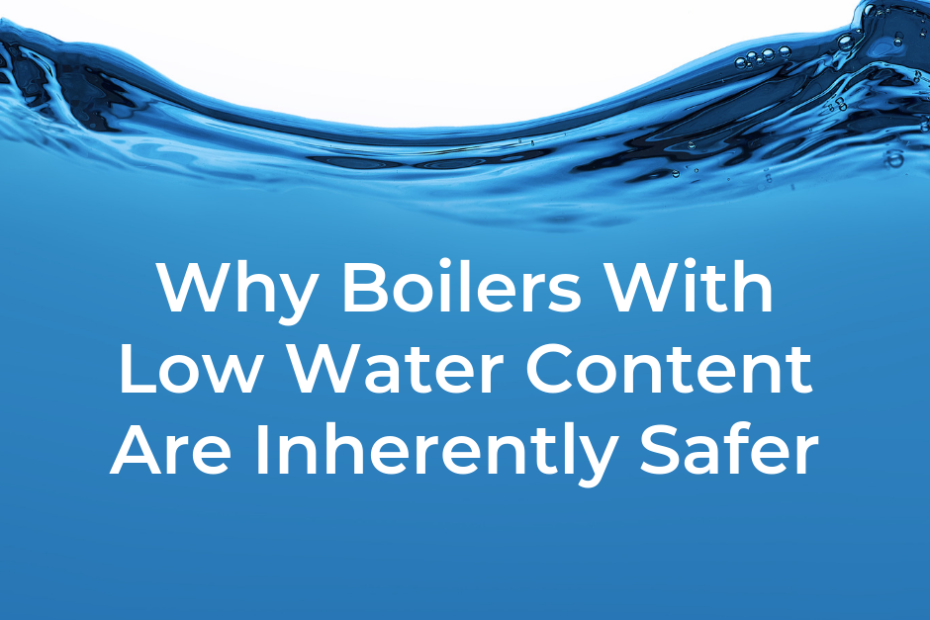Safety is always paramount when working with industrial boilers. Obviously, there are a number of things that can be done — most notably keeping up with routine maintenance — to ensure that a boiler operates as safely as possible. However, it’s also important to note that the design of certain boilers makes them inherently safer than others. This is particularly true of boilers that operate with a limited amount of water. Here is a closer look at why boilers with low water content are inherently safer than conventional boilers.
Saturated Water is Dangerous
The first thing to understand is the potential danger of saturated water in situations of high pressure, which is what exists in traditional fire tube boilers. This is because steam has a much higher volume than water, roughly 1,600 times larger. If too many gallons of saturated water were to flash into steam, the mass of the steam created would exceed what the boiler room can contain, resulting in an explosion. As a general rule of thumb, the more saturated water present and the higher the pressure above normal atmospheric pressure, the more dangerous the situation. With fire tube boilers holding hundreds, possibly thousands of gallons of water, there was a clear need for a change in the volume of water inside boilers to make them safer when technology made it possible.“Floating Header” Design
The design that was necessary to reduce the water content was a boiler that could heat up and cool down as quickly as possible based on changing steam needs. Miura developed such a product with the “floating header” water tube boiler. In this design, the water tubes help to support the part of the boiler above them while “floating” freely as they expand and contract. As a result, there is no need for the gallons of water serving as a buffer for the burner, which is the case with a fire tube boiler.Control Over Water Level
The “floating header” design helps to simplify the process when it comes to controlling the level of water inside the boiler. The boiler’s control board features control logic that calls for water delivery through a vertical pump when needed. There is also timing logic to ensure the flow rate and pressure of the feed water are appropriate. While sophisticated technologically, the process is rather simple to ensure the water level does not exceed what it needs to be. If the water level is not controlled properly, Miura has programmed the boiler to trip offline until the operator is able to reset it. This prevents the kind of saturated water with high-pressure situation that can be problematic with fire tube boilers.Simplifying Maintenance
Finally, boilers with low water content are also safer than conventional boilers because the maintenance process has been simplified as much as possible. The maintenance of traditional boilers is both intensive and time-consuming. However, the ability of water tube boilers to quickly shift from among low fire, high fire, and off positions helps to make routine maintenance much easier and simpler to accomplish. As mentioned at the beginning, routine maintenance is one of the best ways to ensure the safety of a boiler. That helps to make low water content boilers inherently safer than conventional boilers.Contact Miura today to learn more about low water content boilers.





